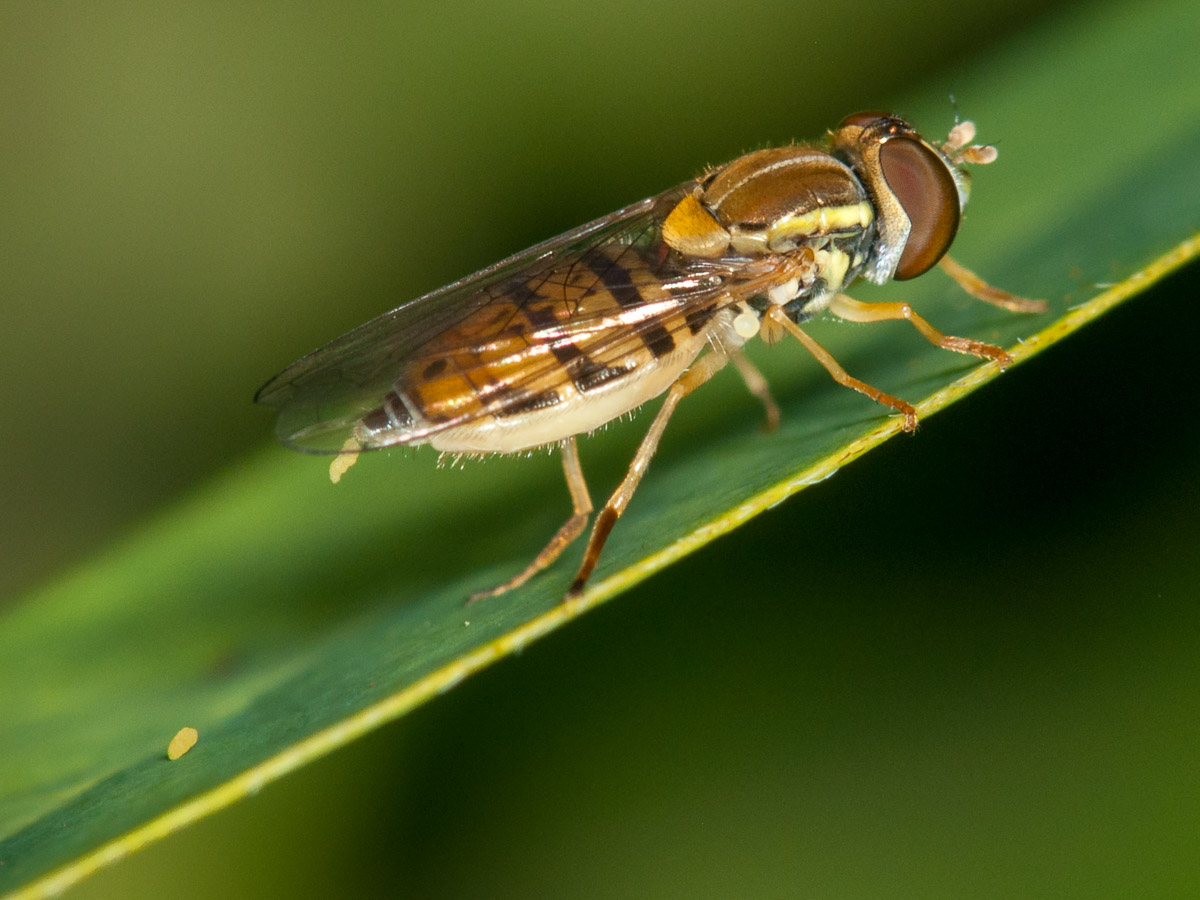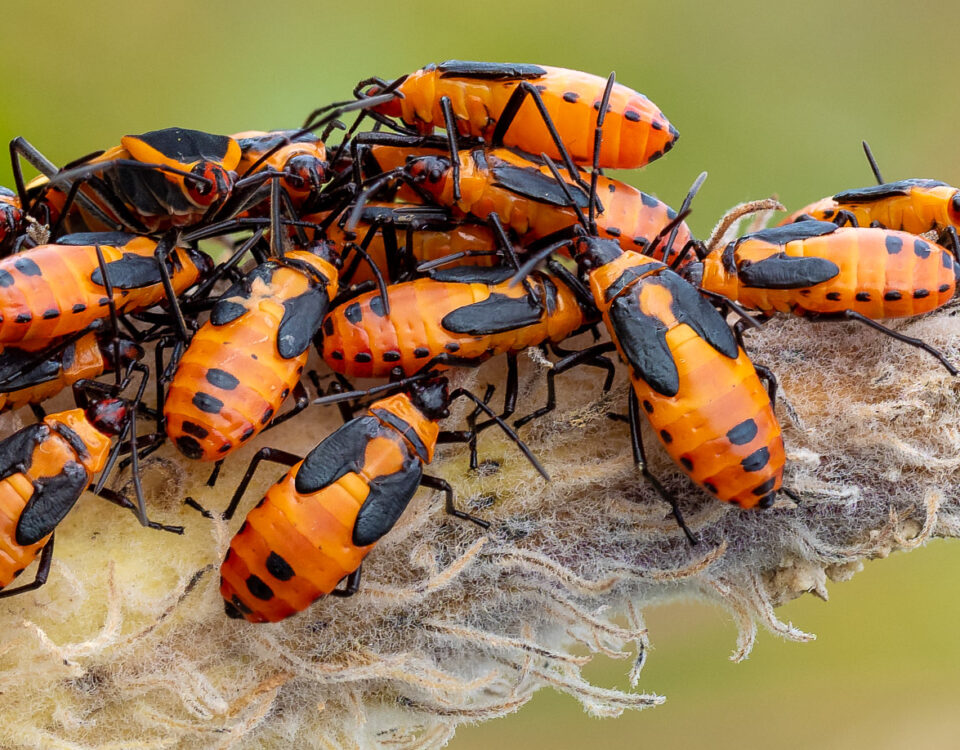Calligrapher flower flies are great beneficial insects

Golden Alexanders Support Tiny Wildlife
May 28, 2020
Our Transformation to Native Plants
June 24, 2020I think Calligrapher flower flies are top contenders as one of the best beneficial insects you can have in your garden.
You probably have Calligraphers and don’t know it because they are small and look more like little bees and wasps than flies. These flower flies are great beneficial insects worth knowing. Here’s my list of traits for the best garden insect – and native Calligrapher flies check all the boxes!
- Good pollinators
- Eat problem insects like aphids
- Don’t eat the plants
- Don't sting or bother me
- Are beautiful to look at and don’t fly away when I get close
- Are present in large numbers
I didn’t notice Calligrapher flies until I started to take close-up photographs of flowers and pollinators. Then I assumed they were bees or wasps. It isn't us humans they are trying to trick, but predators that will leave them alone thinking they have a stinger. Which they don’t - because they are FLIES. It isn’t hard to find misidentified photos of Calligrapher flies in social media. If I see your photo I may point it out!
Adult flies eat nectar and pollen so are found on flowers or resting on nearby leaves. You can find them in a wide range of habitats - one of which is the home garden. Because they are so small (1/4 inch or less), I find them on some of the smallest of wildflowers in addition to our garden variety plants. They also "hover" or fly in place. Another common name for their family is Hover Flies.
Click on an image to activate a slideshow with titles and captions.
What takes some insects out of contention as the "best" for your garden is that their larvae are voracious eaters of leaves that impact our perceived beauty of the plant or even kill it. But Calligrapher larvae eat APHIDS and some of the other tiny insects that gather on the leaves and stems of flowers to suck the life out of plants. The females lay eggs on plant leaves near aphid colonies.
Calligrapher flies will find your garden on one main condition – you don’t use pesticides on your flowering plants.
Little is known about the larvae, but Flower Fly larvae in general vary in color and pattern, often with a yellow stripe down the center. They are legless and taper in size at the ends. Unless you watch aphids on your flowers closely, you are unlikely to see one – and who does that! Ok, me sometimes.

Margined Calligrapher female laying eggs

Flower fly larva near aphids
So how do you tell Calligrapher flies from bees and wasps? The easiest characteristics to find fast are the large eyes that make up the majority of their face and their short antennas. And like all flies, they have 2 wings where bees and wasps have 4 wings. Sometimes they fold their wings over their backs, but when they hold their wings out you can see their single set of wings with a keen eye.
Calligraphers are a genus in the family Flower Flies (Syrphids). This family of flies is fascinating, so you’ll see more examples from me in the future. Calligraphers get their common name from the scribble-like marks on their abdomens.
The two common species in my Pennsylvania garden are Margined Calligrapher (Toxomerus marginatus) and Eastern Calligrapher (Toxomerus geminatus). Margined can be found across much of the US. These flies are identified by the pattern on their abdomen, although it can vary significantly. The Margined has a dot at the end of the abdomen and a dark pattern that goes around the edge of the abdomen (the margin) broken by thin yellow lines. The abdominal pattern on the Eastern Calligrapher is more jagged and has broader yellow areas at the margin. For those of you out west, the Western Calligrapher (Toxomerus occidentalis) replaces the Eastern and is similar. Head to Florida, and you’ll find many more species.

Male Eastern Calligrapher with darker abdomen

Female Margined Calligrapher, note the dark margin at the edge of the abdomen

Small wasp, note the smaller eyes and long antenna (Parancistrocerus perennis)
Calligraphers are frequently seen in mating pairs - they even fly and hover while paired. You can separate the females from the males by looking at the eyes - especially if you can zoom in with a photo. The eyes of females are separated, where the eyes of males touch together. Also, the tip of the female’s abdomen is pointed where the male’s is rounded.

Margined Calligrapher mating pair on flowering fescue grass. Male on top has bright orange abdomen tip.




